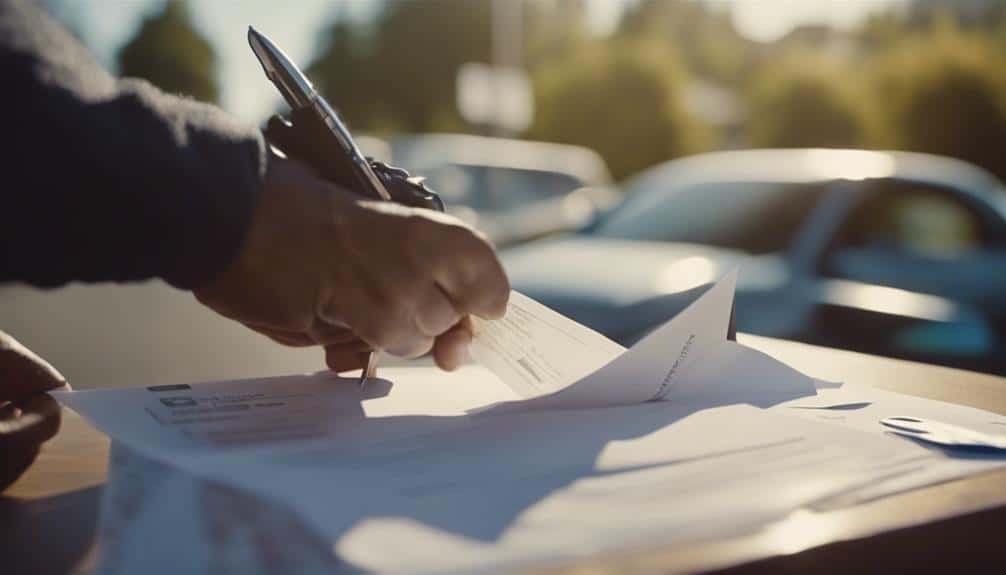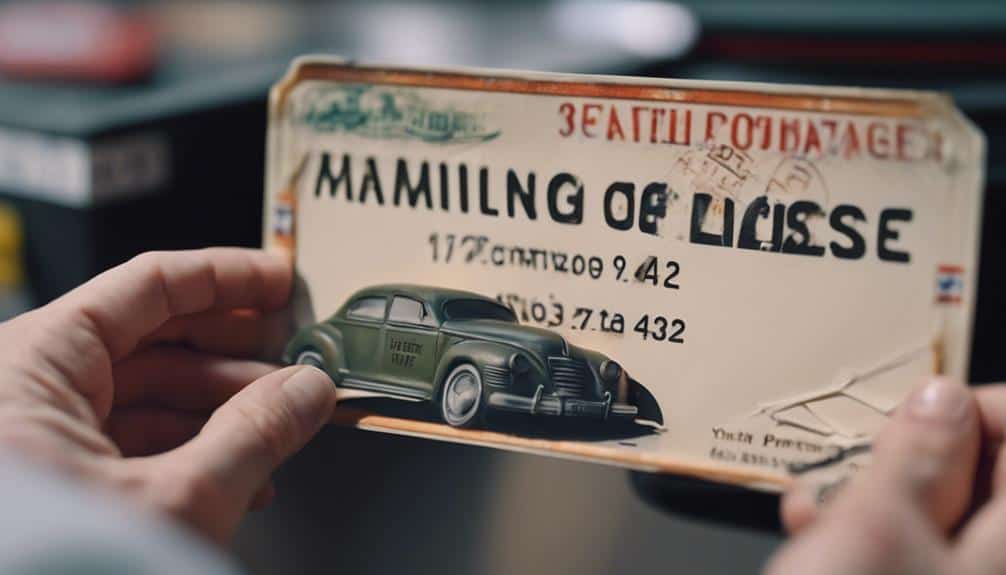To master the art of mailing license plates, it is vital to comprehend the reasons, regulations, packaging, shipping options, and required documentation. Understanding why plates need to be mailed, checking state-specific mailing regulations, using sturdy packaging materials to protect plates from damage during transit, evaluating shipping carriers and costs, and including all necessary DMV documentation are essential steps for a smooth ownership transfer process. Embracing these detailed aspects guarantees compliance with state guidelines and facilitates an efficient plate return process.
Key Takeaways
- Understand state regulations for mailing plates.
- Secure plates in sturdy packaging to prevent damage.
- Choose reliable carrier for cost-effective shipping.
- Include all required DMV documentation in the package.
Reasons for Mailing License Plates

Understanding the various circumstances that necessitate mailing license plates plays an essential role in guaranteeing compliance with state regulations and facilitating a seamless process for individuals involved in vehicle ownership changes.
When a vehicle is sold or transferred to a new owner, the plate return becomes mandatory to signify the change in ownership.
Similarly, when relocating to a different state, returning old plates is a common requirement to comply with local regulations.
Temporary out-of-state registration may also prompt the need for mailing plates back home to complete the vehicle transfer process correctly.
Being aware of these scenarios not only streamlines the plate return process but also guarantees adherence to state guidelines regarding vehicle ownership changes.
Regulations and Guidelines
Exploring the regulations and guidelines surrounding the mailing of license plates is imperative for securing compliance with state requirements and facilitating a smooth process for individuals managing vehicle ownership changes.
Before initiating any mailing procedures, it is vital to check if the specific state permits mailing of license plates, as most states allow it but with certain restrictions in place.
Local DMV websites offer essential information on state compliance, and contacting the DMV directly can help clarify any uncertainties regarding mailing regulations.
Adhering to state laws when mailing license plates is essential to prevent potential legal issues and guarantee a seamless shift of vehicle ownership.
Compliance with regulations guarantees a hassle-free experience for all parties involved in the process.
Packaging for Shipment

To guarantee the safe transit of license plates, proper packaging is essential for protecting them from potential damage during shipment.
When preparing license plates for mailing, it is important to use sturdy packaging materials to make certain they arrive intact at their destination.
Place the license plates flat between two durable cardboard pieces to prevent bending, then wrap them in bubble wrap or paper to avoid scratches.
Use strong tape to secure the cardboard packaging effectively, and opt for a box over a padded envelope for added protection.
It is critical to confirm that the packaging is robust enough to withstand the mailing logistics and transit conditions to avoid any damage along the way.
Shipping Options Overview
When considering shipping options for license plates, it is essential to assess the carriers available and their respective services to guarantee a secure and efficient delivery process.
Understanding the shipping costs associated with different carriers such as USPS, UPS, and FedEx is important in making an informed decision. USPS First Class mail is often the most cost-effective option, while Priority Mail offers faster delivery along with tracking services for added peace of mind.
It is advisable to inquire about insurance options to protect the package during transit.
Confirming specific mailing requirements with each carrier before shipment guarantees compliance with their regulations and helps streamline the mailing process effectively.
Required DMV Documentation

Understanding the requisite documentation mandated by the DMV is essential when preparing to mail license plates, ensuring a smooth and compliant process.
For the plate return process, it is vital to include a completed vehicle registration form along with the plates. Proof of valid insurance should also be provided in the mailing package.
In cases of vehicle ownership transfer, a signed title or bill of sale is necessary to facilitate the process accurately.
Contacting the DMV beforehand to verify the required documents for mailing plates is recommended to avoid any processing delays or issues.
Ensuring all necessary documentation is included not only helps in compliance with regulations but also streamlines the plate mailing process efficiently.
Conclusion
By mastering the art of mailing license plates, individuals can navigate the complexities of vehicle ownership and registration with confidence and compliance.
Understanding the reasons for sending plates, adhering to regulations, and utilizing proper packaging and shipping methods are essential steps in ensuring a seamless and lawful process.
By following the guidelines outlined in this article, individuals can effectively manage plate shipment for various purposes while staying in accordance with DMV requirements.

Oliver Postman was born and raised in a small town in the Midwest, where his fascination with postage began at an early age. At just six years old, he stumbled upon a box of old stamps in his grandfather’s attic, igniting a passion that would shape his life.

